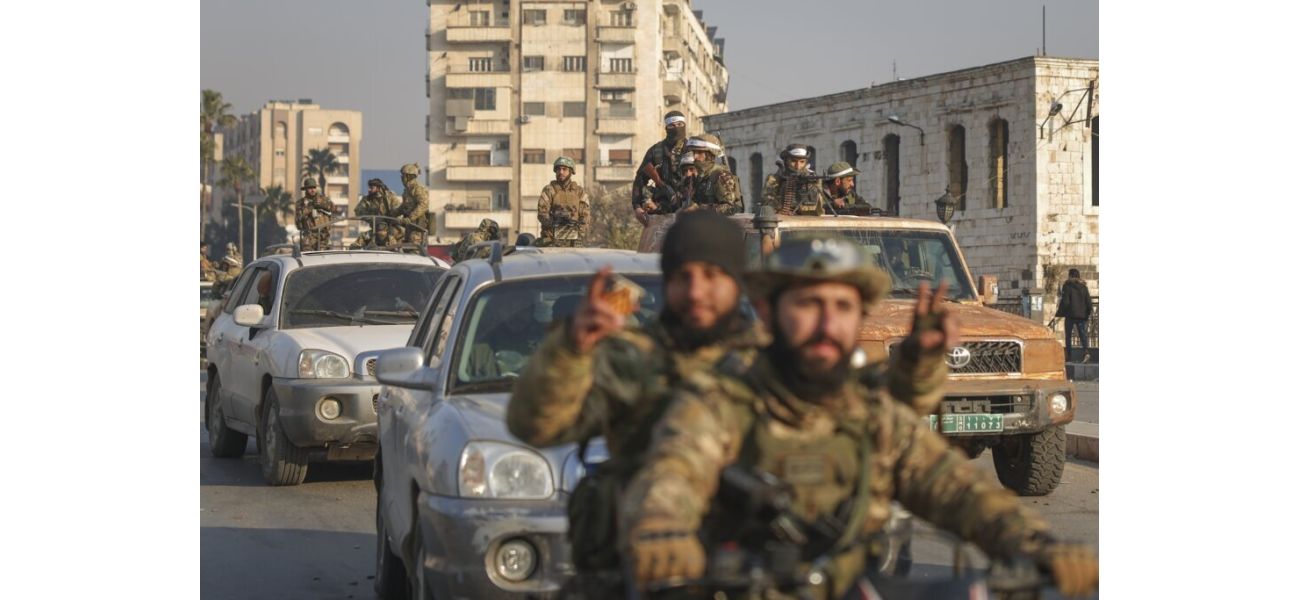Who are the opposition fighters at the gates of Damascus and what comes next?
Rebels have taken over Syria's capital, causing a global shock.
December 8th 2024.

In a sudden and unexpected turn of events, opposition fighters have managed to enter the Syrian capital. This has caused a major crisis and has taken the world by surprise. The Syrian Army, with little resistance, has abandoned key cities, while President Bashar Assad himself has left the country. This has raised questions about the identity of these fighters and what their plans are if they take control of Damascus and other major cities.
Let's take a closer look at how this situation has unfolded in the past 10 days, and what could potentially happen in the future as Syria's 13-year civil war reignites. The main goal of these opposition forces is to overthrow the current government. This is the first time since 2018 that they have reached the outskirts of Damascus, as the Syrian troops had recaptured the area after a long siege.
The fighters, led by the powerful insurgent group Hayat Tahrir al-Sham (HTS) and the Syrian National Army, launched a surprise offensive on November 27th. They were able to capture Aleppo, Syria's largest city, as well as the central city of Hama. The HTS, which has its origins in al-Qaeda, is considered a terrorist organization by the U.S. and the United Nations. However, the group has claimed to have cut ties with al-Qaeda and has focused on promoting civilian government in their territory, in addition to military action.
In an exclusive interview with CNN, HTS leader Abu Mohammed al-Golani stated that their main goal is to overthrow Assad's government. However, there could be potential rifts within the opposition forces, as the Turkish-backed Syrian militias also have an interest in creating a buffer zone near the Turkish border to keep away Kurdish militants. Turkey, who has been a major supporter of the opposition, has recently called for reconciliation and has denied any involvement in the current offensive.
While the initial offensive took place in the north, armed opposition groups have also mobilized in other areas. The southern regions of Sweida and Daraa have both been taken locally. Sweida, which is the heartland of Syria's Druze religious minority, had been a site of regular anti-government protests even after Assad's control over the area. Daraa, on the other hand, is a Sunni Muslim area and was seen as the birthplace of the uprising against Assad's rule in 2011. It was recaptured by government troops in 2018, but rebels remained in some areas. The eastern part of Syria is mainly controlled by the Syrian Democratic Forces, a Kurdish-led group backed by the U.S.
Currently, the Syrian government only has control over three out of 14 provincial capitals: Damascus, Latakia, and Tartus. As the opposition forces encircle Damascus and Syrian troops withdraw from the central city of Homs, the situation is becoming increasingly tense. If Homs is captured, it would cut off the link between Damascus and the coastal region, where Assad has a strong support base. This could potentially mean the end of the Syria that we have known in the past, according to a resident of Damascus.
Assad seems to be facing this crisis alone, as his allies Russia and Iran are preoccupied with other conflicts and Hezbollah, based in Lebanon, is weakened from their war with Israel. The U.N. special envoy for Syria, Geir Pedersen, is seeking urgent talks in Geneva to ensure a peaceful transition of power. He has met with foreign ministers and diplomats from key countries, including Saudi Arabia, Russia, Egypt, Turkey, and Iran, to discuss the situation. Associated Press writer Abby Sewell in Beirut has also contributed to this report.
Let's take a closer look at how this situation has unfolded in the past 10 days, and what could potentially happen in the future as Syria's 13-year civil war reignites. The main goal of these opposition forces is to overthrow the current government. This is the first time since 2018 that they have reached the outskirts of Damascus, as the Syrian troops had recaptured the area after a long siege.
The fighters, led by the powerful insurgent group Hayat Tahrir al-Sham (HTS) and the Syrian National Army, launched a surprise offensive on November 27th. They were able to capture Aleppo, Syria's largest city, as well as the central city of Hama. The HTS, which has its origins in al-Qaeda, is considered a terrorist organization by the U.S. and the United Nations. However, the group has claimed to have cut ties with al-Qaeda and has focused on promoting civilian government in their territory, in addition to military action.
In an exclusive interview with CNN, HTS leader Abu Mohammed al-Golani stated that their main goal is to overthrow Assad's government. However, there could be potential rifts within the opposition forces, as the Turkish-backed Syrian militias also have an interest in creating a buffer zone near the Turkish border to keep away Kurdish militants. Turkey, who has been a major supporter of the opposition, has recently called for reconciliation and has denied any involvement in the current offensive.
While the initial offensive took place in the north, armed opposition groups have also mobilized in other areas. The southern regions of Sweida and Daraa have both been taken locally. Sweida, which is the heartland of Syria's Druze religious minority, had been a site of regular anti-government protests even after Assad's control over the area. Daraa, on the other hand, is a Sunni Muslim area and was seen as the birthplace of the uprising against Assad's rule in 2011. It was recaptured by government troops in 2018, but rebels remained in some areas. The eastern part of Syria is mainly controlled by the Syrian Democratic Forces, a Kurdish-led group backed by the U.S.
Currently, the Syrian government only has control over three out of 14 provincial capitals: Damascus, Latakia, and Tartus. As the opposition forces encircle Damascus and Syrian troops withdraw from the central city of Homs, the situation is becoming increasingly tense. If Homs is captured, it would cut off the link between Damascus and the coastal region, where Assad has a strong support base. This could potentially mean the end of the Syria that we have known in the past, according to a resident of Damascus.
Assad seems to be facing this crisis alone, as his allies Russia and Iran are preoccupied with other conflicts and Hezbollah, based in Lebanon, is weakened from their war with Israel. The U.N. special envoy for Syria, Geir Pedersen, is seeking urgent talks in Geneva to ensure a peaceful transition of power. He has met with foreign ministers and diplomats from key countries, including Saudi Arabia, Russia, Egypt, Turkey, and Iran, to discuss the situation. Associated Press writer Abby Sewell in Beirut has also contributed to this report.
[This article has been trending online recently and has been generated with AI. Your feed is customized.]
[Generative AI is experimental.]
0
0
Submit Comment





